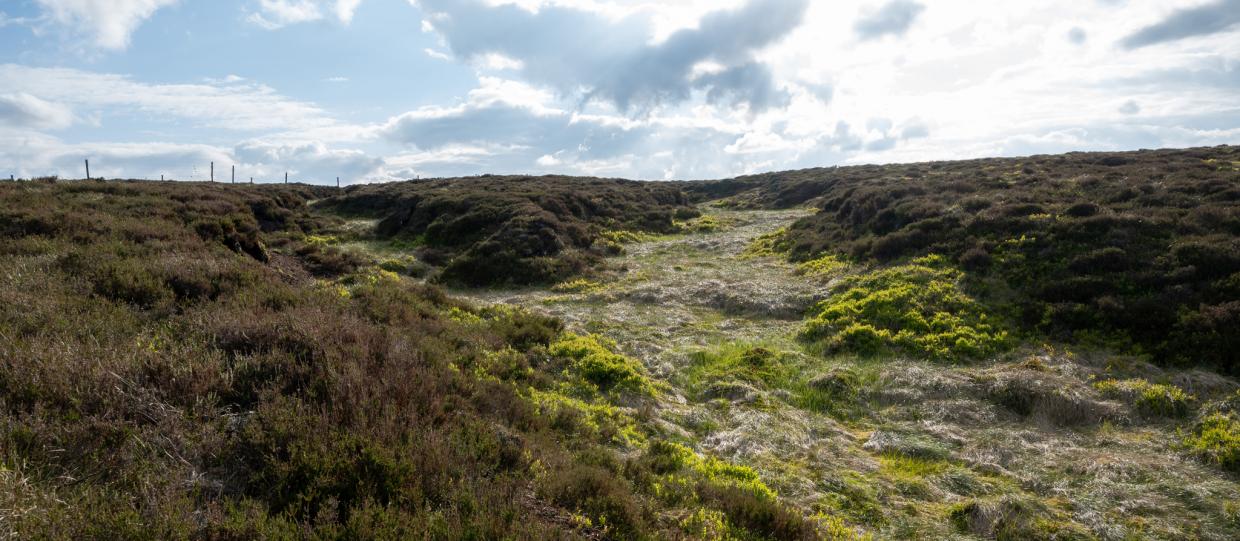Peatland: a valuable habitat
Peatlands cover more than 20% of Scotland’s land area and  are one of the most carbon-rich ecosystems on Earth, storing an estimated 3.2 billion tonnes of carbon in the UK alone. Healthy peatlands not only continue to remove CO2 from the atmosphere and lock it away, but are important habitats supporting a range of biodiversity, and provide other valuable ecosystem services including improving water quality and reducing flood risk downstream.
are one of the most carbon-rich ecosystems on Earth, storing an estimated 3.2 billion tonnes of carbon in the UK alone. Healthy peatlands not only continue to remove CO2 from the atmosphere and lock it away, but are important habitats supporting a range of biodiversity, and provide other valuable ecosystem services including improving water quality and reducing flood risk downstream.
However, it is estimated that around 80% of our peatlands are degraded, largely due to human activities. Such degraded peatlands are estimated to be responsible for net greenhouse gas emissions equivalent of around 20 million tonnes of CO2 each year, and exacerbating flooding and water quality issues.
Consequently, peatland restoration is a key element of the Scottish Government's Climate Change Plan 2018-2032.
Peatland restoration at Glensaugh
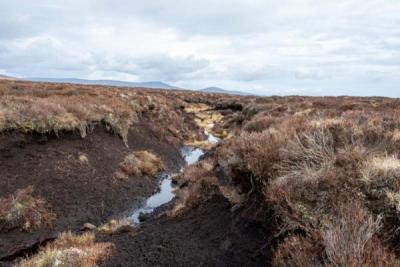
In common with much upland blanket bog in Scotland, areas of the peatland at Glensaugh were degraded, with bare peat hags and gullies, and associated erosion and excessive drainage. Our goal was therefore to improve the ecological condition of the peatland by restoring those degraded peat hags and gullies, minimize further erosion, enhance overall water retention, and encourage biodiversity.
The area of degraded peatland identified straddled the boundary between Glensaugh and our neighbours, Glen Dye Estate, so we worked with Glen Dye Estate to achieve restoration of both sides at the same time. The restoration work was funded by NatureScot’s Peatland ACTION - Peatland ACTION is a programme of works helping to restore damaged peatlands across Scotland, funded by the Scottish Government.
Restoration works were undertaken in 2022, utilising experienced contractors and specialised machinery, including excavators fitted with custom-designed extra-wide ‘bog-tracks’ to minimise damage.
Restoration techniques
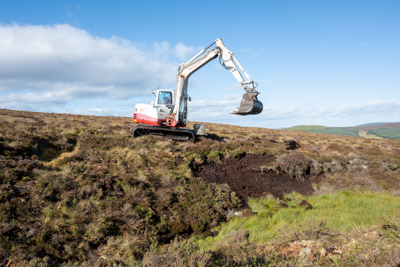
- Revegetating exposed peat: bare peat faces were reprofiled to a shallower slope and then revegetated using turves from small “borrow areas” nearby. Recovery of borrow areas was facilitated by stretching existing vegetation around their edges, leaving only shallow depressions that will form valuable small pools for wildlife and new mosses.
- In-gully bunds and baffles: within gullies, low peat and turf “bunds” were constructed to slow water flow, help to trap and build up sediment, and create shallow pools to encourage vegetation regrowth. In wider gullies, where there was a danger of impounding too much water, small peat deflector baffles were constructed instead to slow water flow and deflect it away from the base of the hag to reduce erosion risk.
- Surface ‘Arc’ bunds: low, crescent-shaped bunds were constructed on some slopes above eroding gully systems to help attenuate surface water flows into the gullies, holding more water in newly created bog pools and surrounding peatland, thereby supporting the transition to a healthier habitat.
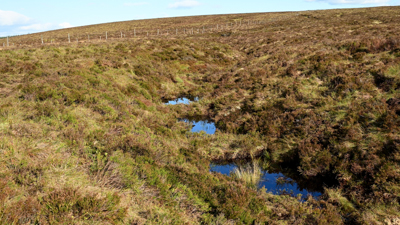
You can watch a video showing the restoration in action here
A leaflet giving further information on the peatland restoration is available here

Outcomes, Monitoring & Research
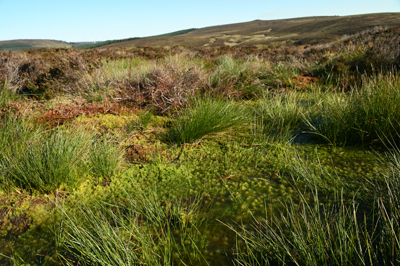
Over 5 km of bare hags and gully sides were restored and over 190 in-gully bunds and baffles and over 60 surface “arc” bunds constructed on Glensaugh’s peatland. This represents around 39 ha of peatland under restoration.
The success of the restoration is being monitored through drone and on-the-ground survey and instrumentation, and the site and restored features managed to promote the continued enhancement of the site’s condition.
Turfs on revegetated slopes generally seem to be establishing well and many of the small pools formed behind bunds already show healthy growths of sphagnum mosses and other bog plants. Over time, we hope to see continuing benefits for biodiversity, for example emergent pools attracting dragon and damselflies, and wetter vegetation encouraging other invertebrates such as cranefly larvae that are an important food for birds.

water levels
The peatland restoration site is also now providing a valuable platform for new research by the Peatland team here at the Hutton, investigating the impacts of different restoration techniques. You can find out more about this work here.
Peatland scientists at the James Hutton Institute are actively involved in several studies of peatlands and their restoration in sites across Scotland and beyond. This includes research that aims to inform the restoration process and ensure that peatland restoration is done in the right place, at the right time, and with the best possible practices to ensure maximum environmental, economic and social benefits.
Contact
For more information, please contact Scot Ramsay - email


